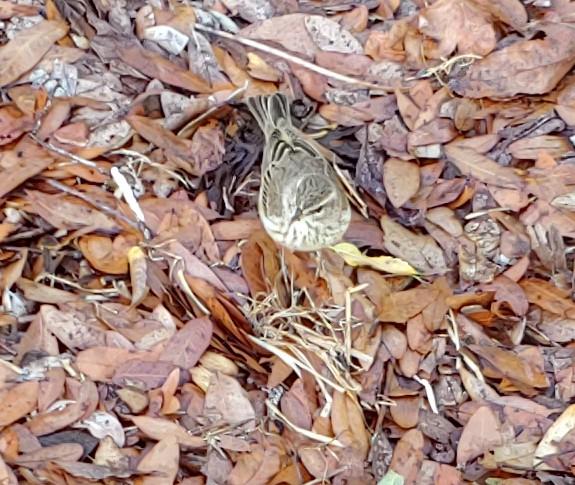Progress One Bird at a Time
 |
| Palm warbler |
I spend a great deal of time in my landscape watching things. I do it unabashedly. It is the only way to know what is visiting and what is not - what is staying and what isn't. While the pollinators found me well within the first 6 month's of my arrival here, it's the birds by which I judge my progress. The bees and butterflies are more than mobile as they skirt across this rather barren suburban area that I now live in; they cue in on their host plants and they can sense them from a good distance away. Once they've done that, they generally are here to stay and I now have a great diversity of butterflies, bees, and other invertebrates. Birds, however, are not that easy. They are looking for much more-complex elements in a landscape if they are to make their homes in it - even for a brief time during migration or during the winter months. It takes more than a few years to really accomplish much in the way of creating good bird habitat.
One has to be an optimist to plant trees and shrubs that might take a decade or more to really fulfill their calling. I've only had about 3. Over this time, my woodland has developed nicely. Very few of the woody plants that I've added have not prospered here with me, but it will be years more before my little woodland is really anything more than a collection of immature plants. My basswood, for example, has yet to reach enough maturity to flower and set seed. My flatwoods plum set a few blooms last spring, but did not produce fruit. It is just too soon and I'm really asking from them more than they can deliver. I've got a few years more before they do much of any significance. If patience is a virtue, as my mother always said it was, I am not a very virtuous person. Not that I don't try.
With fall migration virtually over, I have yet to see any of the real migrants my previous landscape supported. It is my benchmark of success. When I get, once again, an American redstart or a black-throated blue warbler in my canopy or a thrush of some kind picking through the leaf litter beneath it, I will know that I've achieved some level of the success I've planted for. Right now, I have the winter residents that I had last year. They showed up over the last 2 weeks - palm warblers, gray catbirds, a phoebe, and some brown thrashers, for example. They all left me after spring, but they've returned. That's good, but I'm still a good ways off from patting myself on the back. Today, however, I had a glimmer of some future success. I recorded the first pine warbler ever. Pine warblers are resident to my part of Florida, but I've never seen one in my neighborhood. It wasn't visible for long, but it was here and it may hang around for a while. One can only hope.
Creating a landscape for wildlife - a living landscape, takes planning as well as patience. Getting a grasp on how things are progressing takes time "staring" at one's landscape on a regular basis. I've got a great deal of that ahead of me in the months and years ahead.



It took me awhile to get to this blog, but I was glad to finally read it. My yard must be in a somewhat similar place although it''s surrounded by yards with large, older trees including an oak and a few cabbage palms. For the first time ever--and I have lived here for most of my 72 years, I've noticed several warbler species, tufted titmice, an eastern phoebe, a blue gray gnatcatcher, as wellas the seasonal suspects and year-round residents. WHAT A JOY!
ReplyDeleteThanks for your part in helping to create my native habitat.